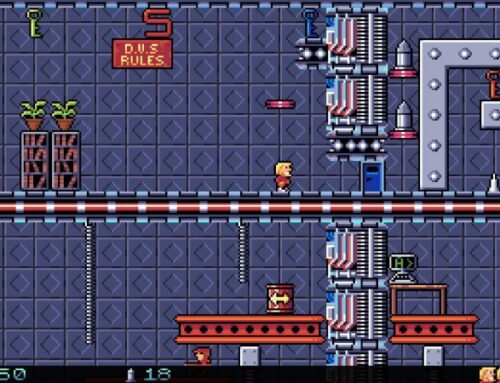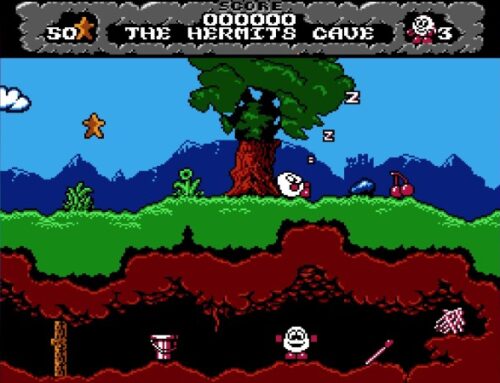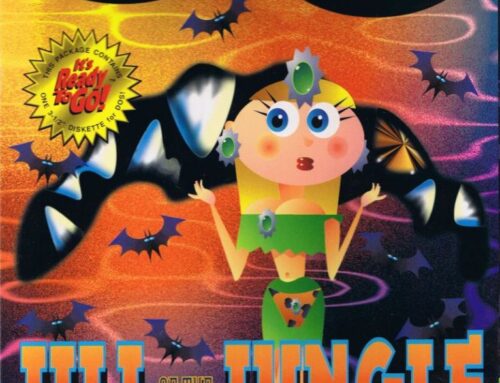
We’re not all grizzled retro gaming veterans — some of us are new to the hobby. So our Getting Into Retro Gaming guides are here to help you get up and running as soon as possible! If there’s any topic that you’d like to learn more about, be sure to let us know and we’ll cover it in a future column!
There are, at this point, a lot of video games out there. Even ignoring notoriously flooded modern marketplaces like the PC’s Steam, the Nintendo eShop on the Switch and the various mobile app stores, there are still a lot of video games out there. And as such, if you’re developing an interest in retro gaming — which would be perfectly understandable, given recent happenings in the games industry of 2022 — you’re doubtless wondering how best to tackle this mountain of potential entertainment that is looming ahead of you.
There would seem to be two basic approaches that you can take.
You can go for a broad approach, where you attempt to experience as much variety as in your retro gaming as possible, potentially sacrificing a deeper understanding of what it is you’re exploring in the process. You end up playing a lot of games, but you never stick with one for long. Variety is the spice of life and all that.

Or you can take a deep-dive approach, where you pick something specific from the massively broad field of retro gaming, and explore it in as much detail as possible. You try to finish individual games. You try to complete collections for specific retro gaming systems — or perhaps even sets of games from specific developers.
Of course, the ideal situation — given a healthy and comfortable amount of free time to explore your hobbies — would appear to be somewhere in between the two extremes. You develop a broad understanding of retro gaming at large, recognising a variety of different experiences and who they might appeal to — then when something resonates with you specifically, you stop what you’re doing and explore that single thing in more depth.
Is that always possible or desirable, though? The interesting thing about retro gaming is that there isn’t an easy answer to that question, because there’s so much variation in what the hobby offers it almost seems unfair to clump everything retro gaming-related under the same umbrella.

Take Atari 2600 games, for example. Many of these games have enjoyed enduring popularity for 40 years or more simply because they are timeless fun. They’re enjoyable to play, they’re rewarding to engage with over the long term, and there are often a lot of interesting things to discover about them — both in the game itself, and in the information surrounding them.
But at their core, most Atari 2600 games aren’t designed to be explored and analysed in depth. Most of them fit into less space than your average image file on the Internet, and consequently are designed to be “easy to learn, hard to master”. And many of them were designed to be treated like a sort of traditional family activity: mom, dad and the kids would all gather around the TV for a game or two of Combat for half an hour or so, then everyone would go off and do their own thing.
This kind of “short-form” philosophy was so baked in to the Atari 2600’s culture in its early days that many games deliberately lasted for what was considered to be an optimal amount of time to have fun: precisely two minutes and 16 seconds.

According to Joe Decuir, who worked at Atari between 1975 and 1979, this value was arrived at through a combination of early hardware limitations and simple “feel” — two minutes 16 seconds was considered to be “long enough to have fun without being exhausting” as well as providing arcade machine operators with a good turnover of customers — and in the case of home machines, ensuring that parents’ patience wasn’t taxed.
With that in mind, then, is it even possible to dive deep into an Atari 2600 game? Some might argue that it is, since you could go hunting for bugs, glitches, Easter eggs or interesting programming techniques — or simply refine your own skills at the game until you feel like you’ve “mastered” it, whatever your definition of that might be.
But for most people enjoying retro gaming as a more casual hobby, developing a broad familiarity with the Atari 2600’s library at large is probably better. There are plenty of trends that can be observed more clearly by looking at the bigger picture rather than attempting to pick apart a single game as much as possible.
You can still take a “deep dive” approach, in fact, but it may be a better use of your time to explore multiple related games — such as those by a single developer or publisher, for example — rather than repeatedly playing Adventure over and over and over again, as good as Adventure is.

As time goes on and games became more complex, however, the situation changes somewhat. The NES, for example, presents an interesting transitional period for gaming where the platform played host to a lot of short-form arcade-style experiences similar to what the 2600 offered (albeit with considerably better tech) — but at the same time, it’s also where we started to get more in the way of long-form experiences, including sprawling action-adventures like The Legend of Zelda, role-playing games such as Final Fantasy and Dragon Quest, and more lengthy, deliberately challenging action games like Castlevania, which reward continued engagement with a little more progress each time.
In this instance, having a broad familiarity with the system’s library as a whole is a good thing, as once again it allows you to identify trends and compare different approaches to similar game styles — but it’s also immensely rewarding to take one of these more substantial games and attempt to see everything it has to offer. There’s a special feeling of satisfaction that comes with knowing you successfully beat the NES version of Final Fantasy rather than the considerably easier more modern versions — and personally speaking, I doff my cap to anyone who can reliably beat Castlevania.
The NES era also marked where gaming started to become more experiential, stimulating multiple senses at once in a way the 2600 never did. While the Atari 2600 typically featured rudimentary or abstract graphics and sound that would make your ears bleed after a while, the NES was an early platform to play host to games with beautifully designed pixel art, masterfully composed music and even early attempts at interactive storytelling. You don’t truly appreciate that without diving more deeply into the experiences that offer that sort of thing — but, of course, it all comes down to where your own priorities lie.

As gaming generations advanced, the NES situation became more and more pronounced, with each new generation feeling like it was de-emphasising short-form experiences more and more in favour of lengthy or complex titles intended to keep players engaged for longer. We see this taken to the natural extreme with modern “lifestyle games” that publishers hope to keep players engaged with indefinitely (ideally spending additional money on top of the base game’s price on a regular basis) — but we were still getting 100+ hour RPGs back in the SNES and PS1 eras.
If anything, short-form gaming has been making a surprising comeback in more recent years thanks to a combination of the modern indie scene and renewed interest in retro gaming. And, to be honest, it’s a delight; it’s a pleasure to be able to pick something up, enjoy it for half an hour or so as something of a palate cleanser, then put it aside for a while before going back to something more substantial.
Ultimately, as we’ve already said, it all comes down to exactly what it is you want to get out of retro gaming as a hobby. Do you want to develop a broad overview of what the games industry looked like over time? Do you want to get to know specific games very well so that you can write or talk about them with confidence? Do you simply enjoy discovering new things? Or have you been searching for that elusive “perfect game” that you want to play for ever and ever?

Everyone’s a bit different in that regard, but wherever your retro gaming priorities lie, there are ways to explore your passion in a way that suits you specifically — whether it’s loading up an emulation device with a huge pile of ROMs to dip into at your leisure, exploring curated collections of retro games such as those provided by the Evercade, engaging with community-led platforms such as Antstream Arcade — or simply trying to get your hands on rare and interesting titles that no-one but you has ever heard of.
The beauty of retro gaming is that you can explore it in many different ways — and by sharing your experiences with others, you might find whole new ways to enjoy the hobby, too. So however you choose to enjoy the classic old games from days of yore, take a moment to chat with your fellow enthusiasts — you never know who might be waiting to tell you about your new favourite game!




